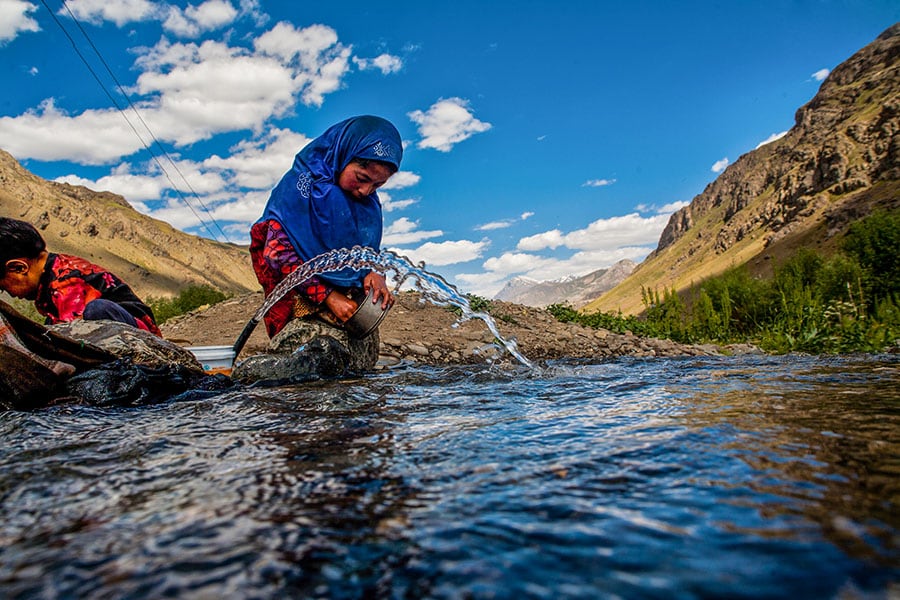
Revisiting the Indus Water Treaty: A path to sustainability and stability in the face of climate change
Climate change severely impacts the Indus River system with changes in precipitation, temperature, droughts, and floods. It is time to revisit the treaty to address the impacts of climate change and ensure its relevance and effectiveness in the future
 A girl washes dishes on the Indus river flowing towards Pakistan administered Kashmir in Drass, 142 km (88 miles) east of Srinagar, Kashmir, India. Drass, the second coldest place on earth straddles on the Line of Control that divides Kashmir between India and Pakistan. In a region with an altitude-influenced subarctic climate, average low temperatures are around -25 C (-10 F), and as low as -45 C (-10 F) at the height of winter, which lasts from mid-October to mid-May.
Image: Yawar Nazir/ Getty Images
A girl washes dishes on the Indus river flowing towards Pakistan administered Kashmir in Drass, 142 km (88 miles) east of Srinagar, Kashmir, India. Drass, the second coldest place on earth straddles on the Line of Control that divides Kashmir between India and Pakistan. In a region with an altitude-influenced subarctic climate, average low temperatures are around -25 C (-10 F), and as low as -45 C (-10 F) at the height of winter, which lasts from mid-October to mid-May.
Image: Yawar Nazir/ Getty Images
The Indus Water Treaty (IWT), signed in 1960 between India and Pakistan, is a bilateral agreement that governs the distribution and management of the Indus River system. The treaty has served as a cornerstone of stability in the region for over six decades, but climate change and changing water demands in India have raised questions about its relevance and efficacy in the current context. India has sent a notice to Pakistan about revisiting the IWT.
What is the Indus Water Treaty?
The IWT is a bilateral water-sharing agreement signed between India and Pakistan in 1960. It governs the use of the Indus River and its tributaries, which are crucial water sources for both countries.Under the terms of the treaty, the Indus River and its tributaries are divided into three Eastern Rivers (the Ravi, Beas, and Sutlej), which are allocated to India for unrestricted use, and three Western Rivers (the Indus, Jhelum, and Chenab), which are allocated to Pakistan for unrestricted use, with some exceptions. The treaty also establishes a mechanism for resolving disputes and provides for cooperation between the two countries on developing hydroelectric power and implementing irrigation projects.
The IWT has been widely regarded as a successful example of water-sharing cooperation between two countries. It has been a cornerstone of stability in the region for over six decades. However, in recent years, there have been tensions between India and Pakistan over the treaty’s implementation. Experts have called for a reassessment of the agreement in light of changing water demands and the impacts of climate change.
Is climate change impacting Indus River System?
Yes, climate change is having an impact on the Indus Water system, which the IWT between India and Pakistan governs. Climate change is causing alterations in precipitation patterns, temperature, and the frequency and severity of droughts and floods, which in turn impacts the water availability and quality in the Indus River system.[This article has been reproduced with permission from the Indian School of Business, India]







